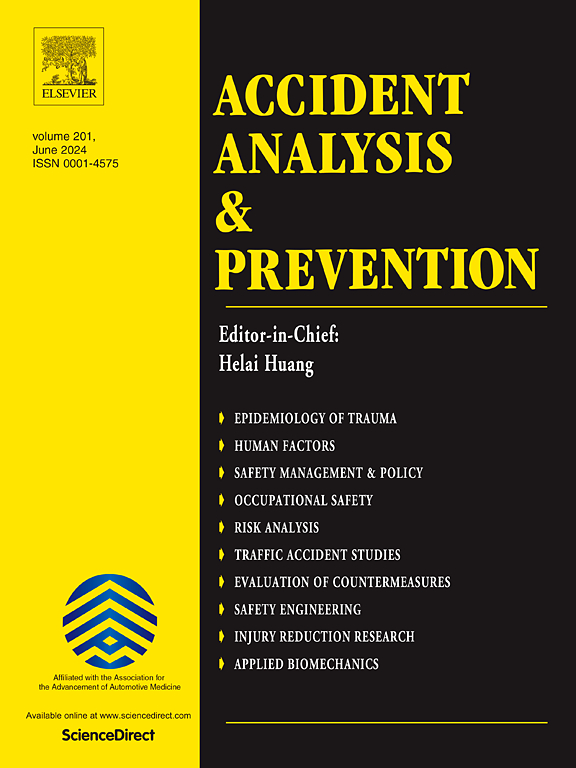Perceived vs. actual multitasking abilities: Predicting texting while driving efficacy and behavior from overconfidence
IF 5.7
1区 工程技术
Q1 ERGONOMICS
引用次数: 0
Abstract
Whereas numerous studies have reported drivers’ overconfidence in their driving ability, this study examines overconfidence in one’s multitasking abilities operationalized as overestimation (perception relative to one’s actual performance) and overplacement (perception relative to others’ abilities) as predictors of texting while driving (TWD). This study also examines TWD self-efficacy as an explanatory mechanism for the relationship between overconfidence and TWD. A sample of 611 undergraduate students (34 % male, mean age of 19.52 years) from a southwestern US university completed an online task-switching paradigm to assess their multitasking ability and multiple self-report measures of TWD-related constructs. TWD was also measured using phone application data. Results indicated that overconfidence (both overestimation and overplacement) was more strongly related to TWD self-efficacy than self-efficacy to resist TWD. TWD self-efficacy explained the relationships between overconfidence and TWD. Additionally, TWD self-efficacy predicted self-reported and actual TWD above and beyond self-efficacy to resist TWD and vice versa. Actual multitasking ability was not significantly related to actual or self-reported TWD. Overall, these findings provide evidence for the influence of overconfidence in multitasking and two forms of self-efficacy on TWD. Implications as well as future directions for research are discussed.
感知与实际的多任务处理能力:从过度自信中预测开车时发短信的效率和行为
尽管许多研究都报道了司机对自己驾驶能力的过度自信,但本研究考察了对多任务处理能力的过度自信,这种过度自信表现为高估(对自己实际表现的感知)和过度定位(对他人能力的感知),作为驾驶时发短信(TWD)的预测因素。本研究亦探讨了自我效能感对过度自信与TWD之间关系的解释机制。来自美国西南部一所大学的611名本科生(34%为男性,平均年龄19.52岁)完成了一项在线任务转换范式,以评估他们的多任务处理能力和twd相关构念的多项自我报告测量。TWD也通过手机应用数据进行测量。结果表明,过度自信(高估和过度定位)与TWD自我效能的关系比抵抗TWD自我效能的关系更强。TWD自我效能解释了过度自信与TWD之间的关系。此外,在自我效能感的基础上,对自我报告的和实际的TWD进行了预测,以抵抗TWD,反之亦然。实际多任务处理能力与实际或自我报告的TWD没有显著相关。总的来说,这些发现为多任务处理中的过度自信和两种形式的自我效能对TWD的影响提供了证据。讨论了研究的意义和未来的研究方向。
本文章由计算机程序翻译,如有差异,请以英文原文为准。
求助全文
约1分钟内获得全文
求助全文
来源期刊

Accident; analysis and prevention
Multiple-
CiteScore
11.90
自引率
16.90%
发文量
264
审稿时长
48 days
期刊介绍:
Accident Analysis & Prevention provides wide coverage of the general areas relating to accidental injury and damage, including the pre-injury and immediate post-injury phases. Published papers deal with medical, legal, economic, educational, behavioral, theoretical or empirical aspects of transportation accidents, as well as with accidents at other sites. Selected topics within the scope of the Journal may include: studies of human, environmental and vehicular factors influencing the occurrence, type and severity of accidents and injury; the design, implementation and evaluation of countermeasures; biomechanics of impact and human tolerance limits to injury; modelling and statistical analysis of accident data; policy, planning and decision-making in safety.
 求助内容:
求助内容: 应助结果提醒方式:
应助结果提醒方式:


